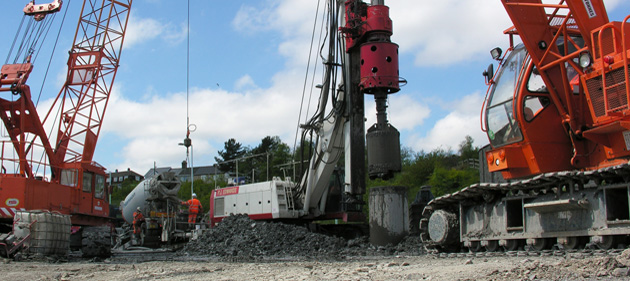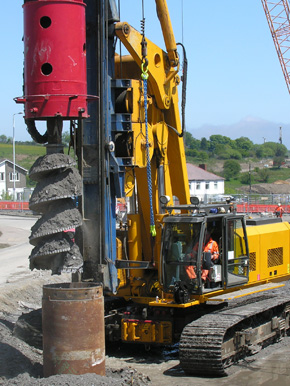A465 - Heads of the Valleys Dualling
Section 3 - Brynmawr to Tredegar

The A465 is a major road in south Wales. It is more commonly known as the Heads of the Valleys Road because it joins together the northern ends or 'heads' of the South Wales Valleys. It generally follows the southern boundary of the Brecon Beacons National Park, and an Ordnance Survey Pathfinder Guide describes it as the unofficial border between rural and industrial South Wales.
In 1994, the possibility was raised of upgrading the whole of the A465 to 2-lane dual carriageway standard between Abergavenny and Hirwaun, a 25-mile (40 km) stretch connecting the existing A465 dual-carriageway link to Swansea and the M4 motorway to the A40. This is an important part of the link to the M50 motorway and much of England.
Section 3 extends from the Intermediate Road Bridge near Brynmawr roundabout to the Nant y Bwch roundabout at Tredegar. It is the next phase of the A465 dualling scheme to be delivered by the Welsh Government, helping to improve journeys and drive regeneration along the Heads of the Valleys.
The contract for Section 3 - Brynmawr to Tredegar was awarded to Carillion in March 2010 with planning commencing soon after. It was announced in August 2012 that approval for the scheme to commence had been given and that construction should commence by the end of 2012 with completion due by early 2015.
The construction of the 180 rotary bored and cased piles began in May 2013. The piles are drilled to depths in excess of 20 metres with design diameters of 900mm, 1050mm and 1180mm using oversize casings of up to 1300mm in diameter. The piles form contiguous bored pile retaining walls associated with the new underpass as well as providing support for the adjacent bridge abutments.
The area's rich industrial past leaves a legacy of abandoned mine workings which had to be grouted up prior to piling commencing. The pile installation process has to encompass the risk of these old mine workings together with artesian water strikes and the penetration of the very tough and variable ground conditions.
The piles are installed through superficial glacial deposits and socketed into the very competent underlying mudstones and sandstones of the Lower Coal Measures Group. This bedrock occurs with intervening bands of very strong ironstone and coal seams which led to coring techniques being required. The whole area is described as a shatter zone associated with the adjacent Tredegar geological fault.
The competent nature of the bedrock established the contract as an extreme example of rotary bored and cased, large diameter piling. The drilling expertise necessary to achieve success was matched our experience in operating at the heavy duty end of the piling market since our operations in the UK started in the late 1980s.
The varying depth to the founding stratum led to the use of segmental casings installed by the powerful heavy duty piling rigs. Full length reinforcement cages of up to 18B40 bars were introduced into the piles and accurately positioned to suit the cut off levels of the sloping capping beams to the retaining walls. Some of the reinforcing cages were fitted with inclinometer tubes such that the deflection of the walls could be monitored after excavation.
The water bearing nature of the founding strata led to the piles being concreted by the tremmie technique of upward displacement. The concreting process and casing extraction was completed using a hydraulic casing oscillator which allowed the company's powerful Mait 260 piling rig to move onto the next pile position as quickly as possible. The Mait 260 was supplemented by a second piling rig which was introduced when required by the main contractor's demanding programme.
The award of the piling contract was the result of the close and co-operative working relationship that we had developed with Carillion and Arup over a 3 year period.
The team responsible for delivering the project, headed by the Welsh Government, is...


